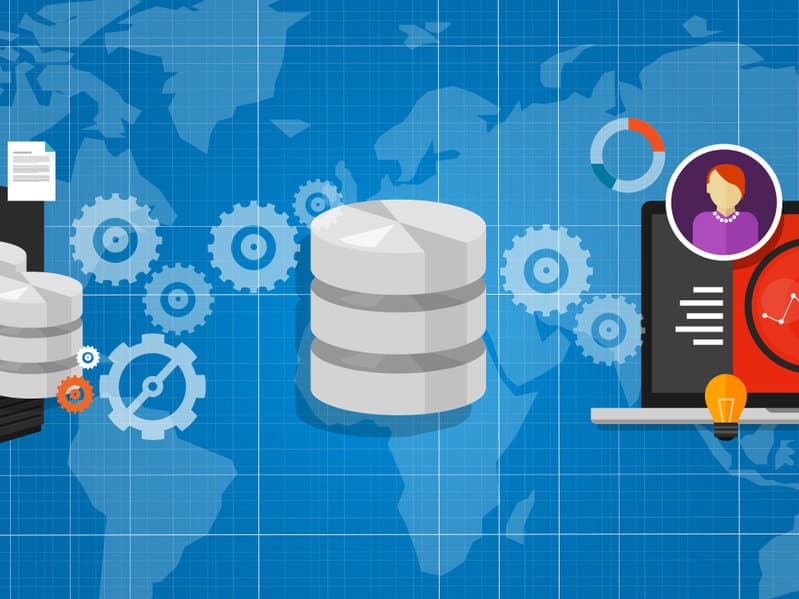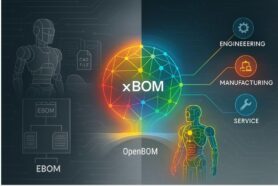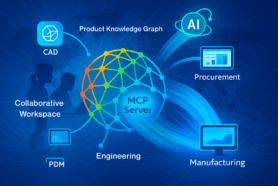
In today’s digital age, it’s critical for businesses to keep up with the latest trends or face being left behind. For manufacturers, this means implementing a digital transformation strategy to stay competitive. As much as it is clear to most manufacturing companies that are contacting OpenBOM, they usually come with a specific question – where do I start? Where is the magic button called “Digital transformation”?
Pre-Digital Transformation Status Quo
Here is the typical picture of an industrial company regardless if it is a large enterprise or an SME manufacturer. Most of these companies are using a bunch of legacy systems and a full dumpster of Excel files to manage data. Silos are killing companies and the biggest challenge is an information management strategy. The latter is usually absent as well as team communication to set up the right data management strategy. Everyone is pulling his own side of the business and trying to solve their specific problem (eg. how to create a BOM from CAD, or how to push data from CAD to ERP, etc.) There is usually a poor definition of the budget as well as budgeting for Digital transformation efforts. The last “icing on the cake is a false sense of security impact” – everyone falsely believes that digital transformation efforts might compromise the data security efforts.
Cloud-Native Technology Enablers
While cloud technology has been around for quite some time, many companies didn’t connect how cloud technologies can become an enabler for digital transformation. There are three main reasons why the recent development of tech will make a difference.
Ubiquity
Modern digital technologies and cloud systems make your digital transformation journey easy. Cloud-native systems are built in a way you can achieve a new customer experience that is expected from all modern systems to support remote working and open ways to accelerate digital processes. During the past decade, many new capabilities were discovered, thanks to modern data management and new technologies to create systems that can be available everywhere, deliver faster, and support the success of teams regardless of their location and business goals.
How can you differentiate cloud-native technologies from so-called “cloud-washing“? Let me start with one example. Navigate to the service website and search for “login” or “sign-up” if you cannot see it, the system that claims to be cloud-native is most probably hosted and will be available to you after the provider performs the system hosting. Another example is pricing. If you cannot see the pricing on the website, it means that most probably, the subscription is not transparent and will require a multi-year contract with a special term. Last example – trial. For most cloud-native systems, the trial process should not be a problem. If you cannot do it, the conclusion is that the service has a complexity that cannot be delivered to anyone who wants to experience it. There are exceptions of course, but these are general rules.
Data Sharing
Every cloud vendor will claim collaboration and data sharing as the biggest advantages of cloud technologies. In PLM, it means that information is available for everyone who needs this. But how is it in real life? Mainstream PLM platforms hosted in the cloud can give you browser-based access, but when it comes to data sharing, you will still be limited to the same system boundary, which is a single tenant. In other words, you need to get on the same system (instance) and be included in system access control. This is how the system worked all the time, but here is the thing – it is very limiting.
Modern cloud-native systems provide you with a flexible and simple “data sharing” mechanism that allows everyone to share data natively regardless of your company’s belonging. When you use cloud-native systems, just search for the “Share” command to make a portion of the data to be available to everyone you need.
Streamline Data Handover and Advanced Integrations
Connecting with applications is not less important than connecting with people. In such a way digital transformation journey gives you accelerated methods of information flow between different environments and the ability to hand over data automatically. It is a big deal because it simplifies processes and eliminates mistakes.
While modern REST APIs help you to connect between other cloud-native applications, seamless integrations into desktop and legacy applications can help you to get data from the places you didn’t even dream of – eg. desktop CAD, legacy database applications, and enterprise tools.
Check integration available for OpenBOM and public REST API to learn how to integrate your data and existing applications.
5 Things To Ensure Digital Transformation Is Off To A Good Start
So, the needs are here and the technical expertise is available. What do you do next? Here are 5 things you can do to start your digital journey.
- Establish goals for your transformation initiative. You need to get it clearly aligned with all technical and business leaders. This may not sound important for most technical folks, but it is very serious. Before starting to wire technology pieces, align your mindset and plans.
- Identify what business process you would like to transform and who will be impacted by the change. Once you do it, you can identify the needs. You need to get in the agile mindset to specify what will be the “before” and “after” status quo.
- Map out the required data assets that you will need to support before jumping to the implementation. You need to find and sample all data that will be involved and plan how the information will be acquired and processed (e.g. legacy Excel files, CAD files, and anything else)
- Plan legacy (existing) data migration. This is one of the most overlooked elements of any technology transformation effort. Any process ran using existing data and the absence of this data can be crucial to making it happen. At the same time, legacy data import can add a substantial cost and jeopardize your successful digital transformation.
- Develop a detailed rollout and training plan backed by people and money. Every transformation effort is as successful as the level of adoption by a business. The more businesses in your organization will adopt it, the bigger and more successful your transformation effort will be.
Conclusion
Digital transformation efforts must be enabled by technology and backed by organizational planning. Only in this way will your organization will be able to adopt it and get the advantages of bringing modern technologies to a business.
REGISTER FOR FREE to check out how OpenBOM can help you today. During OpenBOM’s onboarding training, we help our customers to start the digital transformation with clear minds and simple planning.
Best, Oleg
Join our newsletter to receive a weekly portion of news, articles, and tips about OpenBOM and our community.










